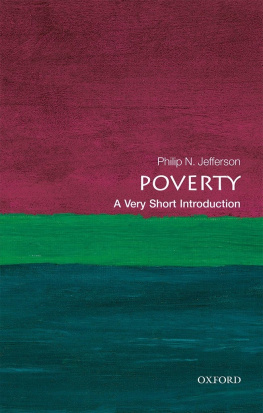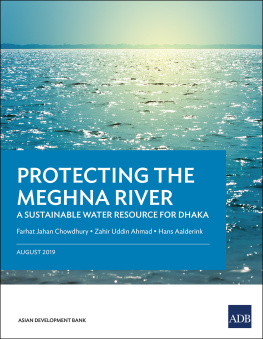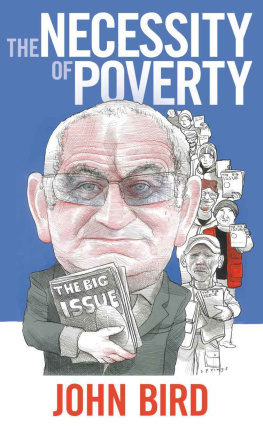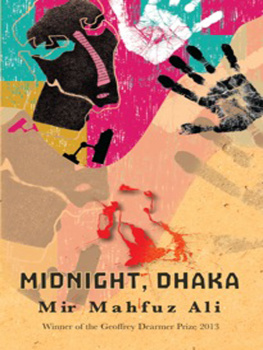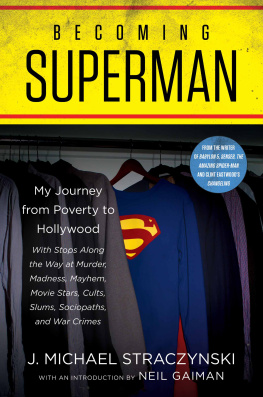POVERTY AND VULNERABILITY IN DHAKA SLUMS
First published 2003 by Ashgate Publishing
Published 2016 by Routledge
2 Park Square, Milton Park, Abingdon, Oxon OX14 4RN
711 Third Avenue, New York, NY 10017
Routledge is an imprint of the Taylor & Francis Group, an informa business
Copyright Jane A. Pryer 2003
The author has asserted her moral right under the Copyright, Designs and Patents Act, 1988, to be identified as the author of this work.
All rights reserved. No part of this book may be reprinted or reproduced or utilised in any form or by any electronic, mechanical, or other means, now known or hereafter invented, including photocopying and recording, or in any information storage or retrieval system, without permission in writing from the publishers.
Notice:
Product or corporate names may be trademarks or registered trademarks, and are used only for identification and explanation without intent to infringe.
British Library Cataloguing in Publication Data
Pryer, Jane A.
Poverty and vulnerability in Dhaka slums : the urban
livelihoods study
1.Poor - Bangladesh - Dhaka 2.Dhaka (Bangladesh) - Social
policy
I.Title
362.5'0954922
Library of Congress Cataloging-in-Publication Data
Pryer, Jane A., 1958
Poverty and vulnerability in Dhaka slums : the urban livelihoods study / Jane A. Pryer.
p. cm.
Includes bibliographical references and index.
1. Poor--Bangladesh--Dhaka. 2. Poverty--Bangladesh--Dhaka. 3.
Slums--Bangladesh--Dhaka. 4. Dhaka (Bangladesh)--Social conditions. 5. Dhaka
(Bangladesh)--Economic conditions. I. Title.
HV4140.6.D43 P79 2002
362.5'095492'2-dc21
2002028123
ISBN 13: 978-0-7546-1864-5 (hbk)
ISBN 13: 978-1-138-26394-9 (pbk)
Contents
List of Figures
List of Tables
Preface
Acknowledgements
11 Factors Affecting Adult Body Mass Index
Thanks to Stephen Rogers for his full support in the process of writing this book, and to the Department of Primary Care and Population Sciences for providing me with a refuge where I could assemble my thoughts and get down to work. Last but not least to friends and colleagues on the ULS team who helped create this important piece of work.
Sponsorship: Department of International Health.
Urban Livelihoods Study (ULS)
The ULS Team includes:
ULS Steering Committee
Dr. Qazi Faruque Ahmed (Proshika Co-Chair), Dr. Jane Pryer (LSHTM Co-Chair), Dr. Geof Wood, Mr. Shahabuddin, Dr. Sarah Salway, Mr. Iqbal Alam Khan, Mr. Matthew Kiggins, Mr. Mahbubul Karim, Professor Nazrul Islam, Dr. Oona Campbell.
Bangladesh Team Members
Bangladesh Project Director: Mr. Md Shahabuddin.
Project Coordinator (Qualitative): Mr. Iqbal Alam Khan.
Qualitative Researchers: Ms. Sonia Jesmin, Mr. Azmal Kabir Kazal, Ms. Mottahera Nasrin, Mr. AEA Opel.
Quantitative Research Officers: Dr. Ataur Rahman, Ms. Shahana Rahman.
Database Manager: Mr. Mostafa el Helal.
Supervisors: Mr. S M Zubair Ali Khan, Mr. Akramul Islam.
Interviewers: Mr. Shahajahan Hossain, Ms. Rifat Aara, Mr. Md Salim, Ms. Dilafroze, Ms. Rezina Khan Ratna, Ms. Rafeza Shaheen, Mr. Patrick Rozario, Ms. Afsari Begum, Mr. Tasbir-ul-Hasnain, Mr. Moniruzzaman, Mr. Md Ataul Islam, Mr. Dayal Chandra Das, Mr. Golam Firoz, Ms. Nurun Nahar, Ms. Namita Chakravarti, Mr. Chandon Banik, Mr. Mustafiz Ali Khan, Ms. Shahina Khan, Ms. Asma Begum, Mr. Mahbubal Alam.
Data Entry Clerks: Mr. Md Helaluddin Farid, Ms. Nargis Akter, Mr. Md Sohel Ahmed Tarafder, Ms. Monira Islam.
Mapping Team: Ms. Rifat Aara, Mr. Arif Hossain Khan, Mr. Md Mainul Islam.
London Team Members
Team Leader: Dr. Jane Pryer.
Project Coordinator: Dr. Sarah Salway.
Project Co-ordinator: Mr. Matthew Kiggins.
Epidemiology Adviser: Dr. Oona Campbell.
Bath Team members
Qualitative Adviser: Dr. Geof Wood.
Student Placement: Ms. Emily Delap.
11.1 Seasonal variations in the percentage distribution of low BMI in adults (BMI18.5)
11.1 Percentage of malnourished adults (BMI <18.5) by sex and age group
11.2 Influence of family structure on the prevalence of adult malnutrition
11.3 Influence of area of residence on the prevalence of malnutrition among adults
11.4 Influence of loan membership involvement of family members on the prevalence of malnutrition in adults
11.5 Influence of self-perceived financial situation in households in the last 30 days on the prevalence of adult malnutrition
11.6 Influence of monthly income on the prevalence of malnutrition in adults
11.7 Influence of household heads occupation on the prevalence of malnutrition in adults
11.8 Comparison of per capita floor space in square metres between households having at least one malnourished adult and households with no malnourished adult
11.9 Influence of drinking water on the prevalence of malnutrition in adults
11.10 Influence of sex of household head on the prevalence of malnutrition in adults
11.11 Influence of electricity in the household on the prevalence of adult malnutrition
11.12 Logistic regression (unadjusted and adjusted) of malnutrition among adults in relation to different socio-demographic, economic and environmental factors
Bangladesh, despite the lowest levels of urbanisation in the developing world, has a remarkably high urban population in absolute terms, being one of the most densely populated countries. The urban population of 22 million in 1990 is expected to increase, according to World Bank estimates, to 57 million by the year 2010. Rapid urbanisation in developing countries brings in its wake numerous problems and challenges. Urban poverty is one important issue and the urban poor, i.e. those who cannot meet their basic needs with their own incomes are a vulnerable segment of the urban population. The Urban Livelihoods Study (ULS) funded by the UK Department for International Development (DflD) in Bangladesh investigated many aspects of poverty and vulnerability in Dhaka slums. This important volume summarises the findings of the excellent work carried out by the ULS team and examines a wide range of issues including livelihood clusters, intra-household nutritional vulnerability, work disabling morbidity and coping strategies, the female workforce, womens negotiation control and well-being, marital instability, child labour, investments in health and in childrens nutrition, and the management of financial shocks and stresses. It uses the knowledge and information garnered to debate on the policy implications of this study for both governmental and nongovernmental organisations in the country.
For Jane Pryer this has been more than a labour of love. It was her enthusiasm following her PhD work in an urban environment in Khulna, Bangladesh, that sparked this study which she has pursued despite encountering tremendous obstacles including serious illness. The published volume is a testimony of her dedication, commitment and tenacity to see things to their fruition. The post-September 11 environment has brought home to us the stark fact that no one is invulnerable - and Jane Pryer, in bringing out this most important book, has shown how one can rise above personal vulnerability. I believe this book has important lessons for a wide spectrum of individuals from academics to policy makers. However, the spirit of how Jane has addressed this challenge is an even more important lesson to us all.



